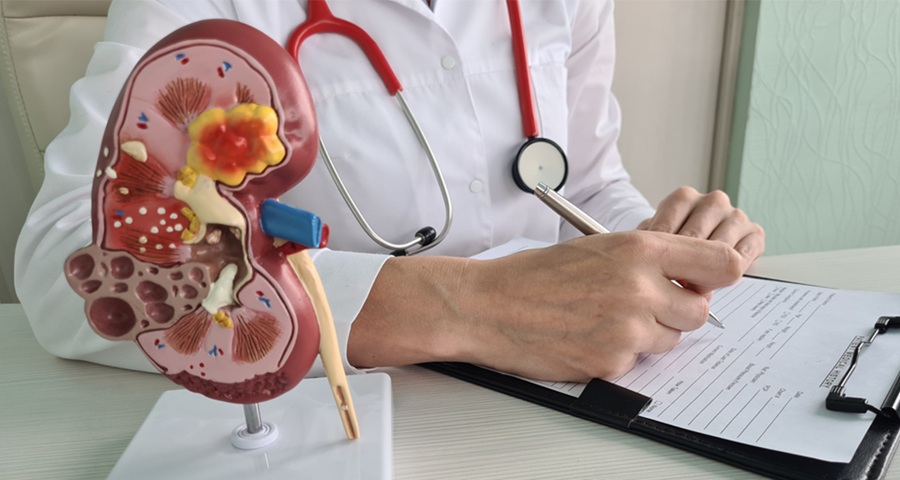Your kidneys are vital organs that filter waste and excess fluids from your blood, helping maintain a healthy balance of minerals and electrolytes. Despite their importance, the kidneys often suffer silently from the side effects of medications we assume are safe—particularly over-the-counter (OTC) drugs and prescription medications used for chronic conditions. Prolonged or high-dose use of certain medicines can lead to acute kidney injury or chronic kidney disease (CKD). Understanding which medications pose a risk—and what alternatives exist—is critical to protecting your kidney health.
How Medications Affect the Kidneys
The kidneys are responsible for processing most drugs and their byproducts. When the filtering units (nephrons) are overburdened or inflamed due to certain compounds, damage can occur. This damage may be temporary (acute kidney injury) or permanent (chronic kidney disease), especially with prolonged exposure.
Factors that increase your risk include:
Age over 60
Pre-existing kidney conditions
Dehydration
Concurrent use of multiple nephrotoxic (kidney-damaging) drugs
Diabetes or high blood pressure
Now, let’s explore the most common kidney-damaging medications and safer alternatives.
1. Non-Steroidal Anti-Inflammatory Drugs (NSAIDs)
Examples: Ibuprofen (Advil, Motrin), Naproxen (Aleve), Diclofenac, Indomethacin
NSAIDs are widely used to relieve pain, inflammation, and fever. However, they reduce blood flow to the kidneys by inhibiting prostaglandins—compounds that help maintain adequate kidney perfusion. Long-term use, or use in high doses, can impair kidney function.
Risks:
Acute kidney injury
Worsening of existing CKD
Increased blood pressure
Safer Alternatives:
Acetaminophen (Paracetamol): Generally safer for mild to moderate pain, particularly in patients with kidney issues (though high doses can harm the liver).
Topical NSAIDs: Gels or creams like diclofenac gel may provide localized relief with less systemic absorption.
Physical therapy or TENS units: Non-drug approaches can help manage chronic pain without harming the kidneys.
2. Proton Pump Inhibitors (PPIs)
Examples: Omeprazole (Prilosec), Esomeprazole (Nexium), Pantoprazole (Protonix)
Used to treat acid reflux and ulcers, PPIs are often taken long-term despite guidelines suggesting short-term use. Research has linked PPIs to an increased risk of chronic kidney disease and acute interstitial nephritis—a type of kidney inflammation.
Risks:
Silent progression to CKD
Acute interstitial nephritis (an allergic-type reaction in the kidneys)
Safer Alternatives:
H2 blockers: Ranitidine (Zantac) and famotidine (Pepcid) have a safer profile when used short-term.
Lifestyle modifications: Elevating the head during sleep, avoiding late-night meals, and reducing trigger foods like caffeine and spicy items can significantly reduce acid reflux symptoms.
Dietary changes: Reducing fatty foods, alcohol, and smoking can decrease reliance on PPIs.
3. Antibiotics
Examples: Vancomycin, Gentamicin, Ciprofloxacin, Trimethoprim-sulfamethoxazole
Certain antibiotics can cause direct toxicity to kidney tissues or trigger allergic reactions in the kidneys. Aminoglycosides (like gentamicin) are among the most nephrotoxic.
Risks:
Acute tubular necrosis
Interstitial nephritis
Reduced glomerular filtration rate (GFR)
Safer Alternatives:
Doctors should monitor kidney function and adjust dosages for patients with pre-existing kidney issues.
Alternatives like doxycycline or azithromycin may be used depending on the infection type.
Ensure antibiotics are only used when necessary and always complete the prescribed course.
4. Diuretics
Examples: Furosemide (Lasix), Hydrochlorothiazide, Bumetanide
Diuretics help remove excess fluid in conditions like hypertension or heart failure. However, they can also lead to dehydration, electrolyte imbalances, and reduced kidney perfusion, especially when overused.
Risks:
Dehydration
Acute kidney injury
Hypokalemia (low potassium levels)
Safer Alternatives:
Use the lowest effective dose under a doctor’s supervision.
Regularly monitor kidney function and electrolyte levels.
Consider lifestyle changes like sodium restriction and exercise to manage fluid overload or blood pressure.
5. Certain Herbal Supplements
Examples: Aristolochic acid-containing herbs, St. John’s Wort, Licorice root
While “natural,” many herbal remedies are not regulated and can contain substances harmful to the kidneys. Aristolochic acid, in particular, is strongly linked to kidney failure and cancer.
Risks:
Interstitial nephritis
Progressive renal failure
Drug interactions with prescribed medications
Safer Alternatives:
Always consult a healthcare provider before using herbal remedies.
Choose only standardized, third-party tested supplements.
Focus on evidence-based natural therapies like turmeric (with caution) or ginger, under professional guidance.
Protecting Your Kidneys: Best Practices
Here’s how to reduce the risk of medication-related kidney damage:
Stay hydrated: Dehydration magnifies the toxic effects of certain medications.
Know your kidney function: Ask your doctor for routine blood (creatinine, eGFR) and urine tests.
Avoid polypharmacy: The more medications you take, the higher the risk of drug interactions and toxicity.
Be cautious with OTC drugs: Just because it doesn’t require a prescription doesn’t mean it’s risk-free.
Final Thoughts
Kidneys may not get the same attention as the heart or lungs, but they are just as crucial to your health. Many common medications, when misused or taken for too long, can silently damage these vital organs. Awareness, moderation, and consultation with a healthcare professional are key to preventing drug-induced kidney damage.
If you’re taking any of the drugs mentioned above regularly—especially NSAIDs or PPIs—it’s worth having a conversation with your doctor about safer alternatives. Protect your kidneys now to avoid life-altering consequences later.
Disclaimer: This article is for informational purposes only and is not a substitute for professional medical advice. Always consult a healthcare provider before making changes to your medication or treatment plan.
